Spring Break Recs: New Middle Grade for 8-13
March 14, 2024 § Leave a comment

I’m not sure I’ve ever counted down to Spring Break quite as fervently as I have this year. I need a break. My kids need a break. And we all need to get off screens. Cue a device-free week of puzzles, hikes, board games, and lots and lots of reading. At least, that’s my plan. (Happy to accept all ideas for how to convince my teens to go along without pitching a knock-down-drag-out fit.) Seriously, though, and I speak from experience: vacations can do wonders for resetting our children’s relationship with recreational reading.
If you have middle-grade readers, then they are in for a treat, because the start to 2024 has been one of the strongest I can remember. At the risk of jinxing our luck, it finally seems publishers have gotten the memo that today’s readers are looking for more action and less heaviness, shorter page counts and bigger servings of humor. There are some big crowd pleasers here. There are also some quieter, thoughtful reads that don’t sacrifice good pacing. Below, you’ll find mystery, thriller, horror, realistic contemporary fiction, historical fiction, and even a touch of sci fi. My word, all that and it isn’t but three months into the year! I wouldn’t be surprised if next year’s Newbery winner was in this list.
Let’s dig in. (And PSST: if you’re local and want to drop by Old Town Books, we have signed copies of several of these titles while supplies last. You can see me while you’re at it, as I’ll be there all day on Saturday, March 16 for our Books in Bloom event!)
The Liars Society
by Alyson Gerber
Ages 8-13
When I say I want to see more edge-of-your-seat stories for the middle-grade audience, I never intend that they should compromise on spectacular writing. I want kids to be breathless with excitement and experience characters who are nuanced and vulnerable, whose collective experience makes kids question the world around them. Well, Alyson Gerber has done the deed. She has taken the excellent character writing of her past novels and directed it into a thrilling new mystery series whose starter title kept me guessing until the last unputdownable page. With a girl and boy protagonist sharing in the telling, The Liars Society will have serious legs for elementary and middle-school kids.
Scandal! Heist! Secret society! Covert bunker! Dangerous family secrets! Mysterious island! Corporate greed! When Weatherby lands a sailing scholarship to the prestigious Boston School, she also discovers a diary kept by her father during his time there. Might this be an opportunity to make real friends and learn more about the elusive dad she has never met? But when the first student Weatherby meets is an insufferable snob named Jack, who’s also her biggest competition on the sailing team, she wonders if she’ll ever fit in with this high-society crew. Then, when funds for the school’s annual trip to an exclusive island mysteriously disappear, Weatherby and Jack are pulled into a high-stakes game to solve the mystery and, they think, secure a coveted spot in the school’s secret society.
But nothing is as it seems. Weatherby and Jack quickly discover that they have more in common than they thought: they’re both keeping secrets from the rest of the school. And as clues are revealed about the secret society they’re desperate to infiltrate, they begin to wonder whether they can trust what they’ve been told by the adults in their life.
A page turner that also poses thoughtful questions about privilege and greed, family and trust, and those formative years between being a kid and a teen.
The Myth of Monsters: Medusa
by Katherine Marsh
Ages 8-12
“Stories are powerful,” Medusa said. “That’s why the male Olympians shaped the myths to celebrate and protect themselves. Look at those stories carefully. They either transform women into objects that have no voice—like a tree or a spider—or else they turn them into monsters.”
Sound the sirens! Master storyteller Katherine Marsh has gifted us the Greek mythology series we didn’t know we were missing. Combining elements of Percy Jackson—kids descended from Greek monsters, taught by demigods at a mysterious boarding school!—part Troubled Girls of Dragomir Academy—girls refusing to be silenced!—The Myth of Monsters, which kicks off with Medusa, upends the Greek myths as we know them, asking us to consider that “history is the story the powerful tell. It’s not always the true story.”
Ava Baldwin has always tried to keep her anger in check, but when her nemesis pushes her too far during the first week of seventh grade, she explodes and renders him—quite literally—unresponsive. Though he recovers quickly, Ava’s parents announce that she and her older brother, Jax, are to switch schools immediately, following in their mom’s footsteps by attending the elite Academia del Forte along the canals of Venice. The only thing more surprising than discovering that the school is for descendants of Greek monsters, designed to teach them to control, even suppress, their newly developing powers so that they can rejoin “mortal society,” is that the school, its teachers, and even Ava’s own mom seem bent on covering up some dangerous secrets of their own.
When Ava’s feisty new bestie, Fia, nearly gets expelled for speaking her mind, Ava, Jax, and their friends are determined to track down Ava’s ancestor, Medusa, for answers. As their page-turning quest takes them from the underworld to Olympus, they come face to face with all the usual Olympians, though special emphasis is paid to historically marginalized voices, like Hecate, Metis, and Persephone. A superbly told story centering girls and women, alongside the boys who support them, and a surefire hit for middle-grade readers who like their stories heavy on action, twists, and reveals!
Max in the House of Spies
by Adam Gidwitz
Ages 8-13
In Max in the House of Spies, the first in a duology, Adam Gidwitz blends WW2 history with a touch of magic to tell a quirky spy thriller that’s as uproariously funny as it is deeply moving. Only the greatest of storytellers could have us believing that a Jewish boy could convince the British Secret Service to parachute him into Nazi Germany as a spy. But that’s exactly what Gidwitz sells us, with punchy sentences, exquisite pacing, authentic dialogue, brilliant banter (between two ancient supernatural pests, no less!), and one of the best first pages ever.
Max Bretzfeld has never left Berlin and barely speaks English, and the last thing he wants is to leave his beloved parents for a house of aristocratic strangers in England, as part of a wave of child evacuees. What’s more, aboard the Kindertransport boat to his new life, he discovers he has picked up two mischievous miniature traveling companions—a kobold named Berg and a dybbuk named Stein—who deliver running commentary into his ears and can’t be seen by anyone else. Even as Max settles into his new life, warming to an eccentric “uncle” who baits him with table tennis and a classmate who shares his outsiderness, he schemes for a way out.
Max is the hero of our kid lit dreams. He’s a whiz with radios. He’s a mastermind at pranks (see also unforgettable cricket match!). And he’ll stop at nothing to get back to Germany and ensure his parents’ well-being, even if that means putting himself through a physical and mental training program at the hands of the British intelligence in order to prove he has what it takes to become their first kid spy.
Deftly balancing existential questions around narrative and identity with humor and a heart of gold, this will be a forever favorite and a hard one to beat once award season rolls around. (But do prepare yourself for one heck of a cliffhanger!)
The First State of Being
by Erin Entrada Kelly
Ages 8-12
Even though I’ve long known Erin Entrada Kelly to be one of the finest character writers for kids, I never predicted that her foray into spatial teleportation would rock my world! The First State of Being combines anxiety, first crushes, and a stranger from the future to deliver a brilliantly constructed novel that boasts as much heart as it does speculative science. In encouraging us to redirect our attention from the uncertainty of the future to the preciousness of the present, it also might be one of the most important novels we hand to our kids.
It’s June, 1999, and on the eve of Michael’s twelfth birthday, on his way home with a swiped can of peaches for the secret Y2K stash under his bed, he runs into a mysterious boy named Ridge. With odd clothes, twitchy behavior, and misused slang, Ridge immediately strikes Michael as suspicious, but when Michael finds him staring enraptured at a dumpster the next morning, he enlists the help of his high school babysitter (and crush) to find out what Ridge’s deal is. It will take plenty of convincing before the two of them believe that Ridge is from the year 2199, and that he’s looking to experience a few highlights of late twentieth-century living (read: mall life) before teleporting back. But can he get back before he disrupts the space-time continuum?
As we follow along on this unexpected friendship—will Michael convince Ridge to give him information about Y2K to set his “weighted mind” at ease?—we get glimpses of the future, including audio transcripts of Ridge’s family in the aftermath of Ridge’s unplanned, unprecedented, and untested (!) teleportation. The result is a mash-up of science and storytelling (not to mention a reveal I never saw coming!) that will have kids seeing their surroundings in an entirely new light.
The Remarkable Journey of Coyote Sunrise and Coyote Lost and Found
by Dan Gemeinhart
Ages 8-12
It’s rare that I talk about sequels in these round ups, but when a sequel is five years in the making and it’s to one of your favorite middle-grade books of all time, it deserves a place. But first, a PSA. FEAR NOT SAD BOOKS! There’s a difference between sad and depressing, and while I don’t advocate for the latter, I do champion sad stories, especially when they’re delivered with humor and hope, making you want to hug the world and not let go. They may not be right for all kids, but I think they’re right for more than we think. A customer recently told me how much her son loved a book I’d recommended. “It also made him really sad.” “That’s amazing!” I said. Feeling sadness while reading—one of the safest places to experience big feelings—actually helps us practice sadness for when we inevitably encounter it in our real lives. Stories that make us sad help us build up emotional reserves. Don’t wait for your kids to be sad to give them sad books; sad times are the worst times to read sad books! Give them sad books when they’re happy, then be proud of their big feelings.
So, yes, Dan Gemeinhart’s The Remarkable Journey of Coyote Sunrise is one of my favorite middle-grade novels. (I wrote about it back in 2019.) It’s a masterclass in voice, starring a self-proclaimed “bananas” protagonist nicknamed Coyote, a spitfire with a heart of gold, and her hippie dad, Rodeo, who drive their schoolbus-turned-home around the country. It is laugh-out-loud funny and filled with eccentric characters and crazy shenanigans. But it often gets passed over by parents, because it’s also about devastating loss. (I’ve bonded with so many kids who’ve loved this book, including my son, and it usually comes down to comparing notes on how hard we cried.) But here’s the thing: while Coyote and Rodeo have suffered an unimaginable loss years before, we shed tears over the way they learn to lean into this sadness in order to begin the process of letting it go.
Now, five years later, we have been given us the sequel of our dreams in Coyote Lost and Found, equally funny, endearing, and tear inducing, as Coyote and Rodeo, joined by a few unexpected companions, take to the road once again, this time on a quest to learn the truth about what Coyote’s mom wanted done with her ashes. I didn’t think it was possible to love this family more, but I do, and I want to press this book into kids’ (and adults’) hands because we all deserve to read a book that has us falling in love with the world (and Mary Oliver’s poetry and sandwiches and second chances) all over again.
Not Quite a Ghost
by Anne Ursu
Ages 9-13
Anne Ursu has always been a superb storyteller—her care with language, slow-building suspense, flirtation with creepy—but her grasp of the tween psyche in Not Quite a Ghost is exceptional. Far more than a portrait of a girl living with invisible illness, this is a story of hauntings. The first by an actual ghost; the second by a medical mystery; the third by ghosts of our own making. This is a story that sits precisely in that space where friendships, family, and even our own bodies are changing faster than we’re ready, and only when we exorcise the nagging self-doubt that comes with such new territory can we free ourselves to embrace the possibilities of the future.
Quiet, obliging, middle-child Violet Hart is navigating a lot of new. She’s starting middle school; she’s adjusting to two new additions (not her choice) to her tight BFF circle, and she’s moving (not her choice) into a new house. For the first time in years, Violet won’t have the comfort of sharing a room with her older, albeit increasingly moody, sister. Instead, she’ll have her own room in a long-neglected attic with mustard yellow wallpaper, whose gnarled flowers give Violet the distinct impression that she’s being watched. Violet is about to spend a lot of time in this possibly haunted room, because after an unsettling game of Truth & Dare at a sleepover, Violet comes down with a mysterious virus.
Each time Violet feels well enough to return to school, a bout of crippling fatigue sets in. It makes gym class impossible, so she takes refuge in the library, where she meets a boy who happens to be researching ghosts. Her frequent absences put a strain on her friendships, especially since she has no cell phone. Worst of all, her friends, then doctors, begin to accuse her of faking her illness for attention. Inspired by Charlotte Perkins Gilman’s famous short story, “The Yellow Wallpaper,” this is a poignant, compelling, and compulsively readable look at the struggle for agency in a world bent on silencing what it doesn’t understand.
The Curse of Eelgrass Bog
by Mary Averling
Ages 8-12
Quirky characters and even quirkier situations abound in The Curse of Eelgrass Bog, Mary Averling’s unique debut middle grade, which combines cozy horror, family secrets, the beginnings of a first queer crush, and deliciously atmospheric writing that makes my reader’s heart very, very happy.
When Kess’ parents departed on an expedition to Antarctica, they left her and her brooding older brother in charge of the family business. Their Unnatural History Museum sports dusty rooms packed with skeletons and fossils of supernatural megafauna, collected from a vast and untamed place called Eelgrass Bog, which sits on the heels of town behind “watch fires” meant to guard its monstrosity. The trouble is, most people think the artifacts are fakes. As Kess waits for her parents to return—why can’t she remember how long they’ve been gone?—she spends her days on the periphery of the Bog, looking for something that might bring patrons back to the museum. For company, she has only her best friend, a pickled head named Shrunken Jim, who speaks to her from a jar where he lives and is gifted at poetic insults and dramatic declarations of love.
And then, Kess discovers a girl named Lilou, snooping around the museum on a mission to delve into her own family secrets. The two quickly join forces to venture past the signal fires in search of the alleged Drowned World, a place of unnatural magic, dangerous bargains, and buried curses, the last of which will play a key role in Kess’ understanding of herself and her family. But what if the Drowned World swallows them up or transforms them into witches like it has done to the others who’ve dared to descend into its bowels?
Drawing Deena
by Hena Khan
Ages 8-12
According to the CDC, anxiety affects approximately one in eleven children, aged 3-17. Some of those affected may not even be aware that they’re struggling from anxiety; they may not even be able to articulate WHAT they’re worried about. They may simply complain of frequent and nagging stomachaches, especially in the morning and especially on school days. Sound familiar?
I suspect this forthcoming release may get lost in the slew of heavy hitters about to drop this week, and that would be a shame, because Hena Khan’s Drawing Deena is a quiet but expertly paced, highly accessible middle-grade novel that deftly balances themes of art and anxiety to tell the story of a Pakistani-American girl who learns to advocate for herself inside and outside her family.
Whether working on a project for her school art class or sketching her classmates, Deena draws constantly, with dreams of becoming a professional artist. But how do you follow your passion when money is too tight for outside training and your parents would rather you focus on things like science? In an effort to demonstrate the efficacy of her artistry and simultaneously help assuage her family’s mounting woes about money that have her parents bickering late into the night, she throws herself into helping promote her mother’s custom clothing business, run out of their house.
Deena’s efforts begin to pay off for her family, but they also open up new challenges, especially with her glamorous cousin, Parisa, who rattles Deena’s confidence by questioning whether she should be more active on social media or try her hair in the latest fashion. On the surface, Deena doesn’t feel like her life is particularly stressful; and yet, each morning she wakes up too nauseous to eat breakfast. And her worry about getting sick on the bus only snowballs into the rest of her day, until an episode at school forces her to ask for the help she needs, not only from the school counselor but from her family.
Heroes
by Alan Gratz
Ages 8-13
Confession: I wasn’t going to read Alan Gratz’s newest. Not because I don’t love Alan Gratz, but because kids are going to find it on their own. As my pal, Chrissie, put it, “Alan Gratz makes readers.” But part of me wondered, does he still got it? Having now read Heroes, a foray into the attack on Pearl Harbor, I can say without hesitation that no one writes prolonged high-stakes action scenes like Gratz. As a parent, I also appreciate that he is careful never to glorify violence and to work instead to capture both the humanity and complexity of the harrowing events at hand.
December 6, 1941: Best friends Frank and Stanley, stationed with their families at the Pearl Harbor naval base in Hawaii, the boys spend their free time creating superhero storylines for a comics series they intend to publish one day. Then, on December 7th, 1941, while the two are touring a battleship with a family friend, chaos and terror strikes, as Japanese planes descend with an unprecedented and catastrophic attack on American soil. It’s the longest two hours of the boys’ life, filled with near misses and daring acts of heroism amidst airborne bullets and underwater torpedoes, as the boys attempt to find safety while aiding wounded sailors. For Frank, who has spent his childhood avoiding risk out of a fear of getting hurt, this heroism is even more impressive.
Gratz’s story doesn’t conclude at the end of December 7: it’s just as interested in the immediate aftermath of the attack, now that the US has been wrenched from the sidelines of WW2. Amidst the preparations to fight is the shocking cruelty suddenly inflicted upon Americans with Japanese ancestry, including Stanley, whose mom is Japanese American. On the day of the attack, Stanley comes across his mom frantically burying precious family heirlooms in their backyard before getting herself to safety. How this dynamic plays out in the friendship between the two boys becomes an excellent lens through which readers can explore themes of prejudice, power, and what it truly means to be a hero. (As a bonus, the novel ends with the boys’ first comic, which uses art to push back on this very racism and injustice.)
Have you enjoyed this post? Make sure you don’t miss others! Enter your email on the right hand side of my homepage, and you’ll receive a new post in your inbox 2-4 times a month. Plus, follow me on Instagram (@thebookmommy), where I’m active most days, posting reviews and updates on what my kids are reading, or Facebook (What To Read To Your Kids) and Twitter (@thebookmommy).
All opinions are my own. Links support the beautiful Old Town Books, where I am the children’s buyer.
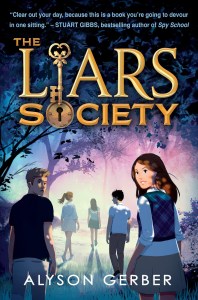
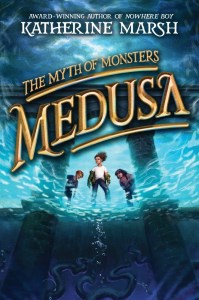
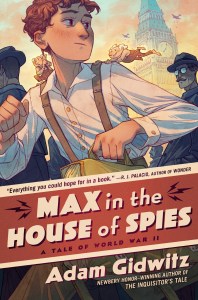
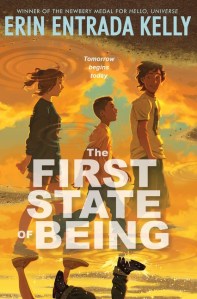
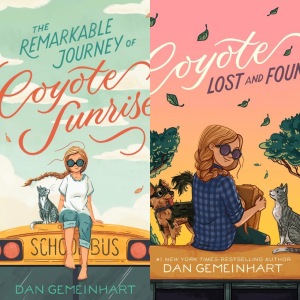
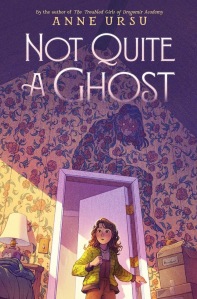
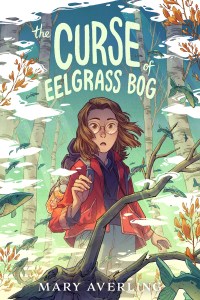
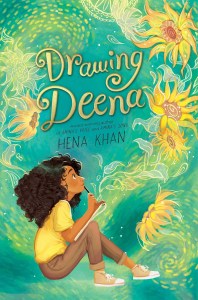
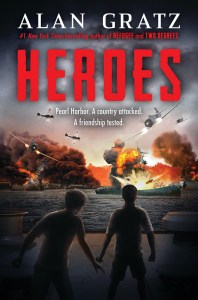
I'd love to hear what you think! Comment here.